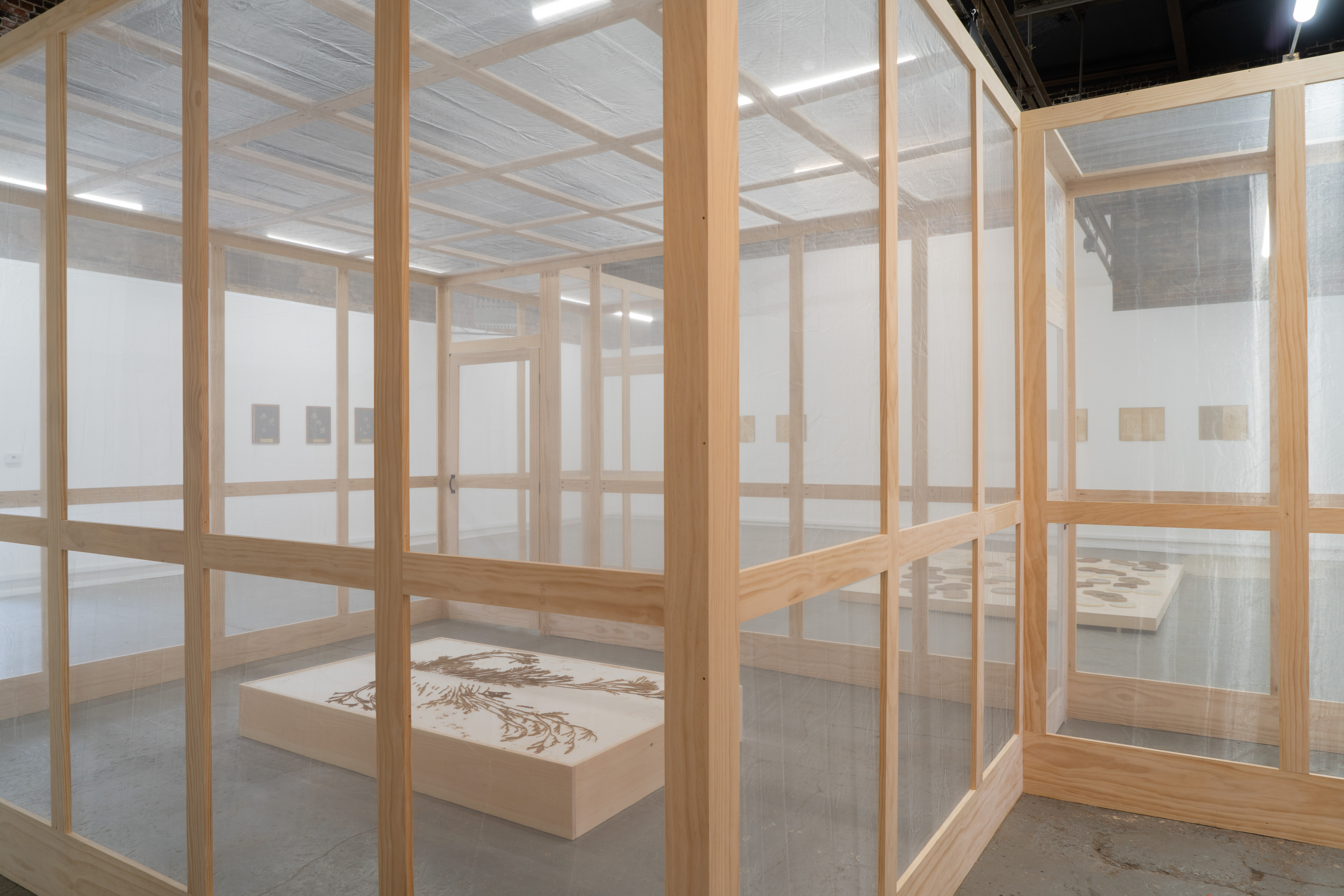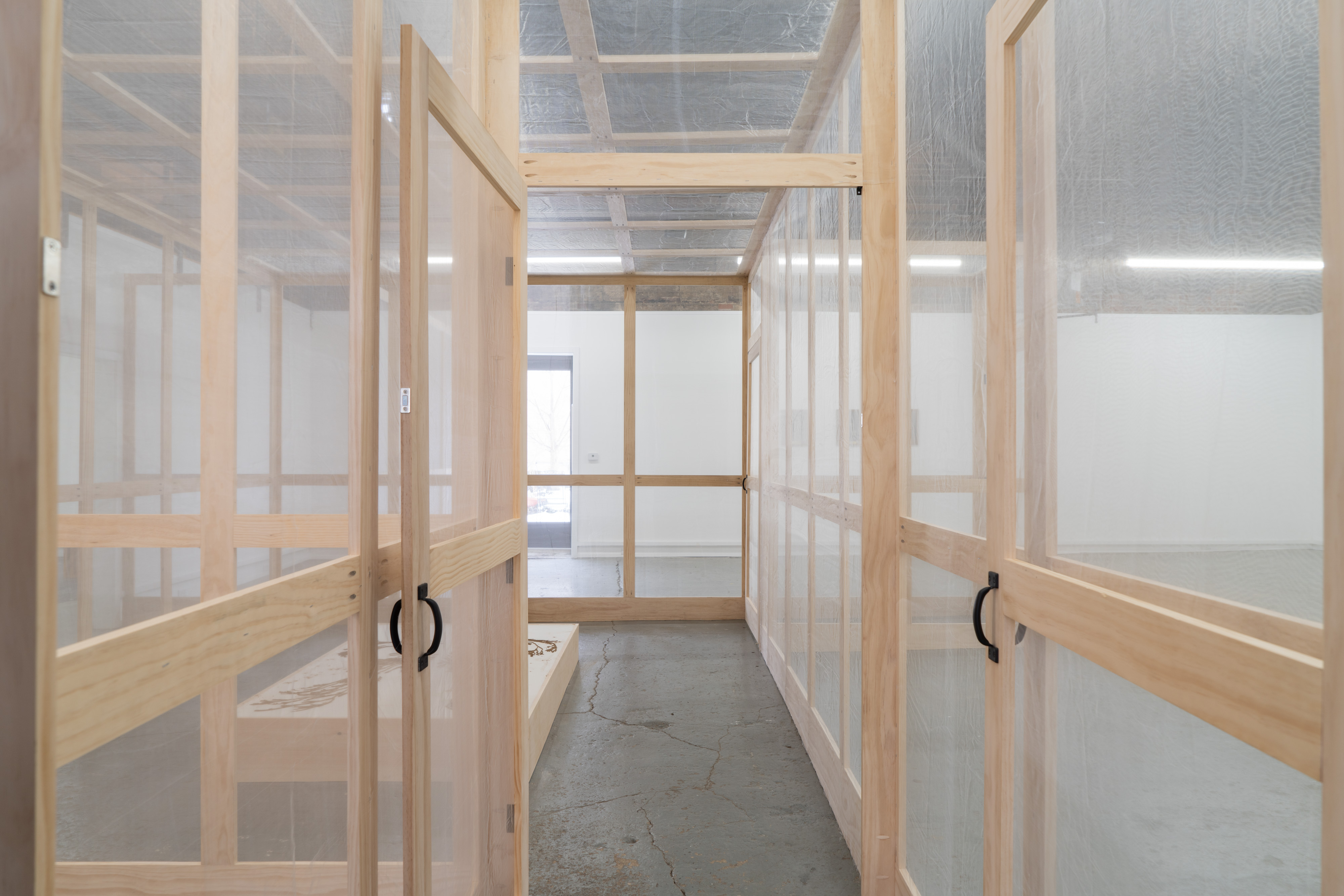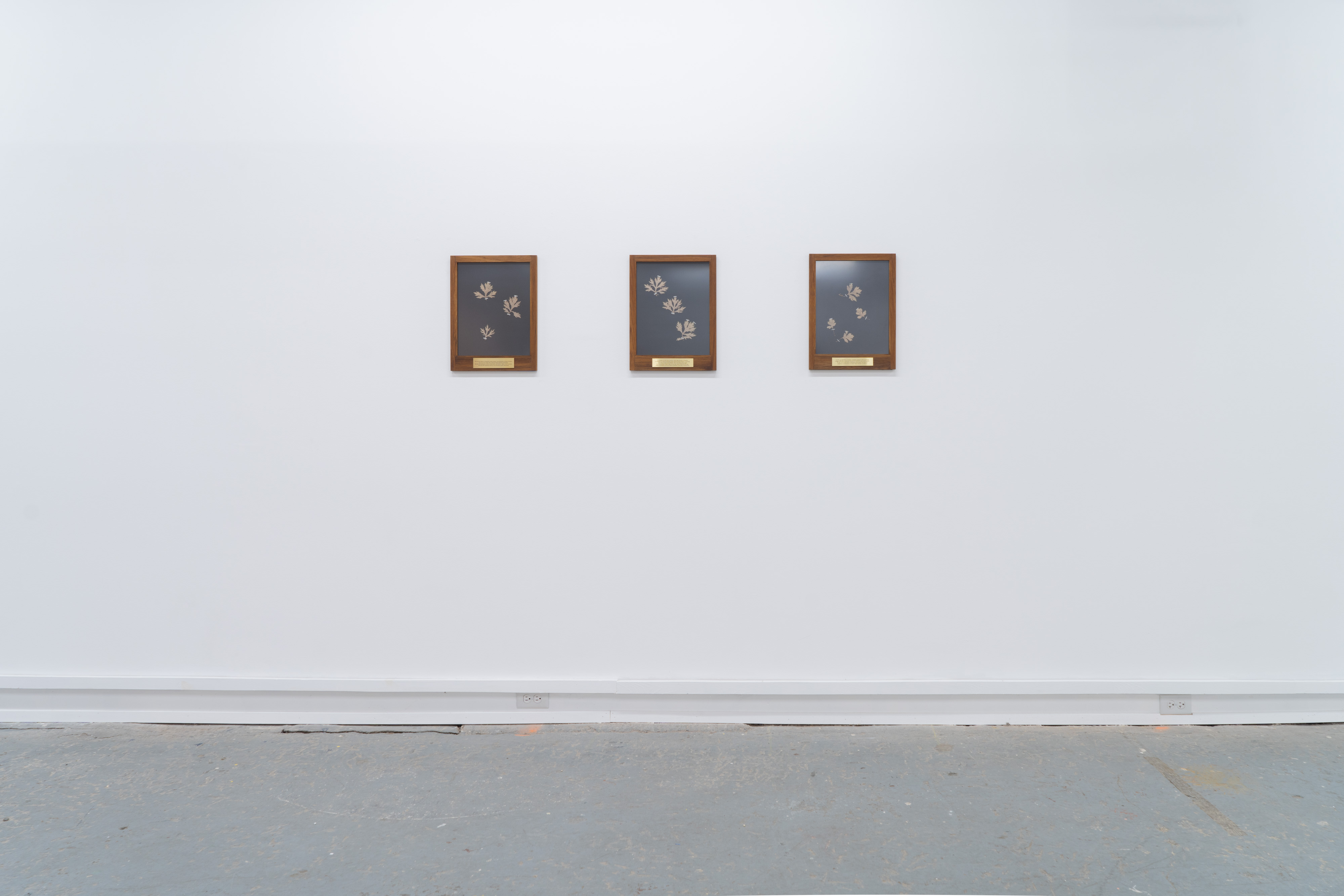The Vegetarian: the Swamp, the Swarm & the Cross
Buffalo Institute of Contemporary Art
Jan 27 - April 1, 2023
Listen for a pulse, against skin, bark, and the softness of piss, in the circadian rhythm of parasites, in what has been burnt and brought back to life, in heavy breaths of deep air.
Over the past two years, Los Angeles-based artist TJ Shin has explored and experimented with the notions and materials embedded in disease, contamination, and the entangled relationship between the violence of colonialism and Eurocentric ideals of wholeness. The artist’s solo exhibition The Vegetarian: the Swamp, the Swarm & the Cross presents a multi-sensory series of works animating the muddied waters which confuse disease and cure, vow and ultimatum, body and spirit. Here, Shin takes up descent as an act of devotion, a meticulous methodology by which they re-visit and re-stage the historical life of malaria. As they sink into the malarial, we find ourselves examining the resounding life of scientist John MacCulloch (1773-1885), who named malaria and committed his life to the ailment; its botanical counterparts; carriers, and repellants of disease.
Where MacCulloch pushed for a radically simple desire to “cleanse” at great lengths, Shin introduces a way to understand disease—its history, materials, treatment—as a field of contradictions that blurs the curative and corrective. Housed in the gallery is a large architectural installation referencing barracks that accommodated non-white workers tasked with sanitizing the Panama Canal of diseases, including malaria, in the early 20th century. An anti-mosquito brigade made up of Black, brown, and Asian Coolie laborers was sent out to fumigate the soil, water, and air with concentrated pesticides while remaining the most vulnerable to the ailment. Air, a carrier of malaria and saturated with chemicals, is met with belabored breath. Shin’s recreation of this space, Architecture of Sanitation (Silver-Roll), meditates on the paradox of purification, fettered to its relationship to control and discipline. The print series, Breath of Preservation, petrifies this process of inhalation, as images of intoxication are burnt into herbarium archives in the mugwort and cinchona family, botanical specimens extracted to produce antimalarial drugs. Images of the anti-mosquito brigade, harvesting of cinchona, Agent Orange, and malarial infection appear against the fungicides and pesticides affixed to the surface, and the portraits fall into smell, vapor, and diffusion.
The room is filled with a humming noise tuned to a certain frequency to repel mosquitos (18 kHz). The soundscape, flos aeris (the bride held fast in the slime of the deep), revels in the potency of transmission and repulsion in the seemingly immaterial. Untitled (100 days of solemnity) lays out a mycelial body in trails of incense made of mugwort that has been transfected with the artist’s DNA. Dried and burnt, the artist and plant are joined as fumigate, ready for dispersal. A series of ceramic plates mimic Petri dishes and cells in continuous motion. Multiple and multiplying, they grow into their own, a looking apparatus to witness the seeping spread of medicinal plants and poisons that treat malaria. The artist’s urine creates the acidity against which extracts—pericón, coreopsis, logwood, oak gall, tobacco, and marigold, among others—produce dendrite-like patterns. The Petri dishes are mapped to the molecular structure of artemisinin and quinine, extracts from mugwort and cinchona tree bark—a speculative atlas for cure, a curious shape of promise.
At each stage of the Swamp, the Swarm & the Cross, Shin traces the edge of malaria, along the racialized praxis of what it means to be human, and the violent trajectory of salvation promised for a life immured to death-before-death. Moving between extraction, transmission, and preservation, the artist manipulates organic materials to capture the many lives malaria holds onto. Where disease and cure are framed by colonial desires and their aliases—salvation, morality, ascension—Shin digs even deeper into earthly matters to reveal the racial grammar of disease, pharmakon, and its echos today. The Vegetarian collapses teleology into the falling spiral, rejects purity, and instead points inwards, to where severance already exists at the microscopic, bodily, and eternal. Each indebted and terribly devoted to one another.
-Anna Cho-Son
The Amp
Exhibition brochure
 Architecture of Sanitation (Silver-Roll), 2023. Wood, mosquito netting, metal. Architecture by Chris Kameck and TJ Shin.
Architecture of Sanitation (Silver-Roll), 2023. Wood, mosquito netting, metal. Architecture by Chris Kameck and TJ Shin.




 Untitled (100 days of solemnity), 2022. Transfected mugwort, cinchona, makko, oak,
wild cherry, sandalwood, ash, diatomaceous
earth, wood. 81 x 51 x 10 inches.
Untitled (100 days of solemnity), 2022. Transfected mugwort, cinchona, makko, oak,
wild cherry, sandalwood, ash, diatomaceous
earth, wood. 81 x 51 x 10 inches. 
 Astrological Botany (Artemisian & Quinine), 2023. Clay, slip, urine, glass, cinchona, mugwort,
tobacco, pericón, coreopsis, logwood, oak
gall, turmeric, marigold, madder, and safflower. 128 x 96 x 4 inches.
Astrological Botany (Artemisian & Quinine), 2023. Clay, slip, urine, glass, cinchona, mugwort,
tobacco, pericón, coreopsis, logwood, oak
gall, turmeric, marigold, madder, and safflower. 128 x 96 x 4 inches.



Breath of Preservation (Standard Colored Barracks), 2023. Herbarium sheet with specimens in the Asteraceae and Rubiaceae family, fungicides, pesticides, smoke, linen, envelope. 16 x 20 inches.


flos aeris (the bride held fast in the slime of the deep), 2023. 4-channel sound installation, 300:00. Sound by Michelle Helene Mackenzie and TJ Shin.
______
Photography by Nando Alvarez-Perez
This exhibition is made possible with the support of the Canada Council for the Arts.
